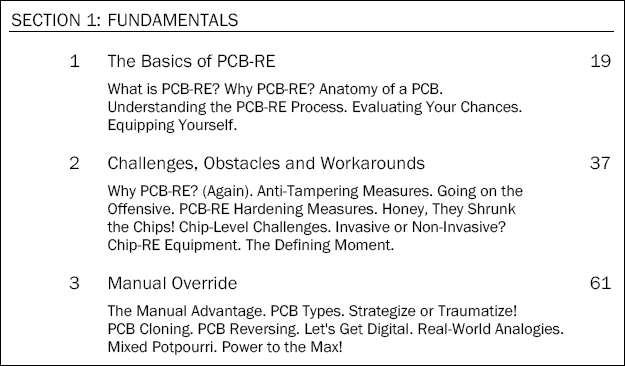First the bad news:
My upcoming book, PCB-RE: Tools & Techniques, will be further delayed due to the non-committal attitude of the last contributor on the FPT and JTAG chapters. This is an unfortunate turn of event and I felt bad for the other contributors who have put in their time and effort, though it was not my fault entirely. In the end, I decided it is better that I write the chapters myself than to depend on someone who keeps playing the delaying game with me.
Like I put it in advance at the ending of the book:
I'm not a person who gloss over details on a subject or task I set my mind to learn or undertake, which is why contributors to the various chapters in this book can appreciate my editorial expectations on their works to ensure readers have the best overall reading experience.
And now the good news:
Bill Loving and Jeff Rupert of ScanCAD International, Inc. have been strong supporters for my book and in view of the delay, I have proposed a special ScanCAD edition to the book for their upcoming exhibitions:
They will be giving away free copies of this book and also my first engineering book The Art of PCB Reverse Engineering to existing and potential customers. So keep a lookout for ScanCAD's booth at these events:
SMTA Guadalajara 2017 - Guadalajara, Mexico - October 18-19, 2017 - USM Reps
Productronica 2017 - Munich, Germany - Nov 14-17,2017
DMC/DMSMS 2017 - Tampa FL, USA - Dec 4-7, 2017 - ScanCAD Booth 501
IPC/APEX 2018 - San Diego, CA, USA - February 27- March 01 ,2018 - ScanCAD Booth
That's all for now. Stay tune for more updates...










